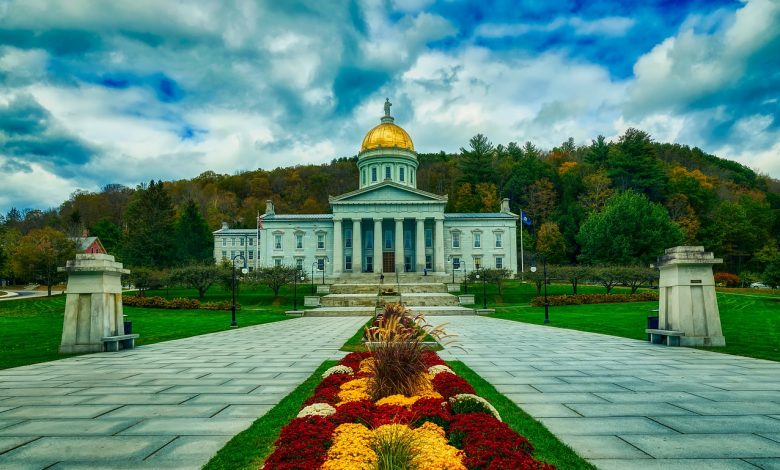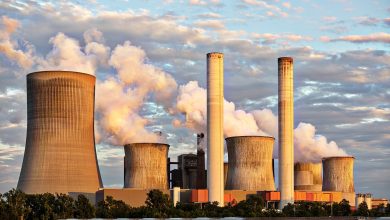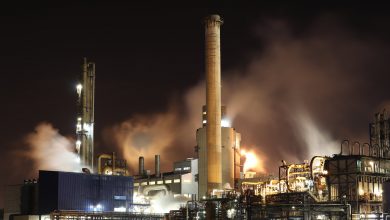Relying on a Three-Member Panel for Statewide Energy Policy

U.S. Energy Policy
Decisions related to energy generation have a wide array of social, environmental, and economic impacts. Energy policy in the United States is comprised of state, federal, and local governmental actions related to the distribution, production, and consumption of various sources of energy, including fossil fuels like oil, coal, and natural gas, in addition to renewable energy sources like solar, wind, and hydroelectric power (Webber Energy Group, 2017). According to the Congressional Research Service, which is a congressional think tank that seeks to provide high-quality analysis and research to members of Congress, the three main goals of energy policy in the United States are related to maintaining a consistent supply of energy, keeping energy costs low, and protecting the environment. Given the importance of these goals, what would happen if an entire state placed the authority to regulate all major energy regulation and production decisions within the hands of a three-member panel?

The Vermont Public Utility Commission
While this may have seemed like a hypothetical question, the State of Vermont has made it a reality. The Vermont Public Utility Commission is a quasi-judicial panel that oversees the management of Vermont’s public utilities. The commission’s three members supervise rate prices, quality of service, and general monetary management of telecommunications and energy utilities in Vermont. The Vermont Public Utility Commission is a vital authority when it comes to the process of developing, distributing, and regulating the state’s energy resources. A power company must receive the approval of the commission if it wants to build any major energy project, such as a wind farm, solar field, or even a natural gas pipeline.
Besides approving new energy projects, the Vermont Public Utility Commission is also tasked with assessing the financial aspects of decommissioning nuclear power plants and the storage of radioactive waste that is left behind, examining rates paid to the power companies, facilitating the safety of energy generating facilities like nuclear power plants and hydroelectric dams, and also supervising the creation of programs related to energy efficiency (State of Vermont, 2002).

Vermont’s Energy Plan
Vermont’s plan to drastically cut fossil fuel consumption has been championed by the state’s Public Utility Commission. By the year 2050, Vermont has an established goal to nearly eliminate all fossil fuel consumption by receiving 90 percent of all energy from renewable sources like wind, solar, and hydropower. While this goal was established in 2011, the small panel of policymakers has been working to establish mechanisms to deliver more energy efficiency programs. The commission has continued to lobby the Vermont Legislature to identify new renewable energy funding programs, while also moving forward with opportunities to disincentive fossil fuel consumption. Since the Vermont Department of Public Service unveiled the statewide energy goal in 2011, Vermont has fallen short on its ambitious plans to reduce greenhouse gas emissions and adequately support renewable energy generation projects.
The Vermont Public Utility Commission ’s foremost mission is to ensure that Vermonters are provided with high quality, sustainable, and reliable public utility services (State of Vermont, 2002). The three-member panel, which is appointed by the state’s governor, is composed of a chairman and two board members. These three key members are supported by attorneys, engineers, financial analysts, environmental analysts, and political analysts (State of Vermont, 2016). The members seek to direct the development of energy projects that function best for the long-term interests of Vermont’s residents, without interference from partisan political beliefs (State of Vermont, 2002). While the commission is a non-partisan entity, the members have been staunch advocates for renewable energy generation over traditional fossil fuel consumption.
An example of a program created by the Vermont Public Utility Commission to help Vermonters directly, would be Efficiency Vermont. This nonprofit organization supports the state’s residents by reducing energy costs, strengthening the economy, and protecting Vermont’s environment (Lucci, 2002). Efficiency Vermont is just one of many examples of how the Vermont Public Utility Commission employs its authority to create programs that seek to support local Vermont communities.

Energy Policy Decision-Making
The Vermont Public Utility Commission transcends its energy policy decision-making through a series of public hearings. To be awarded a permit to begin a new energy construction plan such as the building of electrical transmission lines, electric power-making facilities, and specific gas pipelines within Vermont, it is necessary for the Vermont Public Utility Commission to function in a manner that is comparable to a judicial court (State of Vermont, 2016).
The court hearings are a process that involves numerous interviews, testimonies, and other inquiries to determine how a new project, an electric utility price change, or a utility service extension would affect Vermont. The Vermont Public Utility Commission will often conduct site visits to further investigate how the physical environment will be affected by potential projects. These various types of investigations portray how this quasi-judicial panel effectively utilizes its authority to ensure that Vermont’s energy future remains problem free. Occasionally, the Vermont Public Utility Commission will even work with the Vermont Department of Public Service during a hearing to better determine how to resolve a case in order to serve the best interests of Vermonters (State of Vermont, 1983).
Initially, the Vermont Public Utility Commission must review the environmental and economic effects of any proposition to buy a supply of energy or construct new energy projects. Once this evaluation is complete and the effect of the proposed project on the local economy and the physical environment is determined, the panel must decide whether or not to approve the proposal. If the proposal is approved, a permit know as Certificate of Public Good will be issued (Watts, 2012). This conveys that the Vermont Public Utility Commission and its analysts have determined that a newly planned energy project would benefit the state and its taxpayers.

Criticism
While many Vermonters accept the science behind climate change and support initiatives related to renewable energy generation, the Vermont Public Utility Commission has been the subject of a significant level of criticism from both sides of the political spectrum. Democrats say the commission has not taken enough of a leading role in supporting the state’s ambitious energy goals. Republicans say that the commission has been given too much authority over energy regulation and should work towards a more balanced approach that doesn’t penalize fossil fuel consumption. However, both sides of the political aisle agree that the energy policy mechanisms that have been established by the state’s Public Utility Commission have become too convoluted and complicated.
Renewable Energy Credits
One of the energy policy mechanisms that has been support by the Vermont Public Utility Commission has been the development of renewable energy credits. In an effort to reduce fossil fuel consumption while also saving Vermont residents money on energy costs, the state’s energy leaders have found that buying energy from renewable energy generation projects located outside the state has been considerably cheaper than directly abandoning fossil fuels within the state. The sale of renewable energy credits has been described as a “shell game” by some environmentalists. While this lowers prices for Vermont power consumers, opponents say that in-state large-scale wind, solar, and biomass projects are the only way to actually move forward with progress against fossil fuels. If renewable energy credits were pulled from the state’s energy portfolio altogether, Vermont would be shown to receive zero percent of its energy from solar and zero percent of its energy from wind (Smith, 2018).

Cost of Living Concerns
While environmentalists claim that the state’s Public Utility Commission isn’t doing enough to support robust changes to Vermont’s energy profile, fossil fuel supporters say that the renewable energy goal is unrealistic and will ultimately raise the cost of living in Vermont. Republicans in the Vermont Legislature already say that the state is making it harder for middle class citizens to achieve economic prosperity. They say that thought of penalizing fossil fuel consumption with an additional tax or other disincentives would further exacerbate the state’s affordability issues.
Renewable Energy Standard
With support from prominent members of the Vermont Legislature, the Vermont Public Utility Commission has joined California, Hawaii, and New York in mandating a renewable energy standard that requires public electric utilities in the state to purchase 75 percent or more of their electricity from renewable energy sources by the year 2032. Environmentalists and renewable energy companies have applauded the commission’s push to make public utilities move forward with renewable energy in place of fossil fuels. On the other hand, conservatives point to this effort as yet another move to make Vermont uncompetitive with other New England states, in terms of the overall cost of living.
All-Fuels Utility
In response to criticism that the state’s Public Utility Commission is too focused on renewable energy and electric efficiency, the Vermont Legislature asked the commission to investigate the establishment of an all-fuels utility that would incorporate opportunities to support making fossil fuel consumption more efficient. Proponents say that broadening an energy mission to incorporate fossil fuel efficiency would also address the state’s climate goals. Since many Vermonters use fossil fuels to heat their homes, investments in thermal efficiency programs would help Vermonters use less fossil fuels, while also saving money on fuel bills. Recent shortfalls in emissions reduction goals have made energy policy experts question whether the state is on the right track. Since efficiencies can be gained by making investments in fossil fuel infrastructure, the state may move forward with an all-fuels utility to reduce fossil fuel bills and curb more greenhouse gas emissions.

Fuel Dealer Concerns
Fossil fuel proponents have argued against electrifying all aspects of the state’s thermal and transportation systems. Matt Cota, executive director of the Vermont Fuel Dealers Association, says, “The rush to electrify everything in Vermont runs into reality — that we still need the combustion engine for our roads and a gas- or oil-fired burner to keep our homes warm” (McCallium, 2019). Cota also stresses how liquid fuels, like gasoline, diesel, heating oil, jet fuel, and propane, are vital for everyday life in a cold and rural state like Vermont. Cota and other fossil fuel executives have argued for efficiency improvements to be made to oil-burning technologies as a viable option to move forward incrementally, rather than abandoning fossil fuels completely for more expensive technologies
Vermont Public Utility Commission’s Role
Overall, the Vermont Public Utility Commission plays a critical role in the process of building and maintaining the state’s energy infrastructure. Any new project that would bring power to the state of Vermont, whether it is from wind turbines, hydroelectric dams, or a nuclear power plant, would need to be given a Certificate of Public Good by the Vermont Public Utility Commission to be constructed. If this quasi-judicial panel concludes during a public hearing that a planned project is found to not be in the best interests of Vermonters, it is appealable only to the Vermont Supreme Court. This shows how much authority the Vermont Public Utility Commission has over the energy decision-making process. Energy developers often view this hurdle as the final obstacle that must be passed in order to create new energy infrastructure. In most cases, without the approval of the Vermont Public Utility Commission, a change in Vermont’s energy policy cannot occur. Therefore, it is inevitable that Vermont’s energy future will have to be determined by a three-member panel appointed by each governor.
Sources
Lucci, K. (2012). “Vermont continues to make progress on comprehensive home energy efficiency.” VT Digger.
McCallium, K. (2019). “Efficiency Vermont’s Mission Could Expand — to Fossil Fuels.” Seven Days.
Smith, A. (2018). “Smith: Understanding Vermont’s energy policies.” Vermont Business Magazine.
State of Vermont. (1983). “Rules of Practice.” State of Vermont: Public Service Board.
State of Vermont. (2002). “About the Public Service Board.” State of Vermont: Public Service Board.
State of Vermont. (2016). “Citizens’ Guide to the Vermont Public Utility Commission ‘s Section 248 Process.” State of Vermont: Public Service Board.
Watts, R. (2012). “Public Meltdown: The Story of the Vermont Yankee Nuclear Power Plant.” White River Press: Amherst, Massachusetts.
Weber Energy Group. (2017). “Energy Policy in the United States.” Weber Energy Group Inc.



